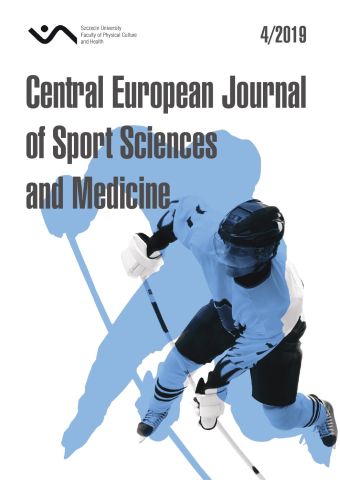
ISSN: 2300-9705
eISSN: 2353-2807
OAI
DOI: 10.18276/cej.2019.4-07




Lista wydań /
Vol. 28, No. 4/2019
The influence of modern technologies on the selected determinants of tourism and recreation development
| Autorzy: |
Jarosław
Nadobnik
Wydział Kultury Fizycznej i Zdrowia, Uniwersytet Szczeciński |
| Słowa kluczowe: | physical activity tourism recreation modern technologies labour market |
| Data publikacji całości: | 2019 |
| Liczba stron: | 10 (75-84) |
Abstrakt
The 21st century, especially its second decade, is a period of very dynamically developing science and technology, which is particularly manifested in many discoveries and inventions. The development of medical sciences, biotechnology, cybernetics, and computer science are making important progress. Industrial robots and other machines carry out programmed work by specialists faster, more precisely and economically than workers. Currently, there is no problem with smartphones to book a plane ticket, accommodation in a hotel, order a taxi or set the shortest route to the holiday destination. Unfortunately, adverse effects of technological progress are also observed, e.g. loss of workplaces caused by the introduction of new production technologies, loosening of social bonds, loneliness and depression of the individual, etc. The aim of the conducted research was to get to know the respondents’ opinions on selected problems related to modern technology in meeting the needs in the field of tourism and recreation and the impact of modern technology on the tourist labor market.
The research group was narrowed down to students studying at the Faculty of Physical Education and Health Promotion of the University. Its participants were first- and second-cycle students a total of 211 people aged 18 to 25 (58 women and 153 men). According to our research, the 92.16% of the respondents use the services available via the Internet, for example for shopping. The 85.29% of the respondents are not afraid of the risk of losing their job to modern technologies. Our research presented in this article shows that the vast majority of the respondents perceive the negative impact of the development of modern technologies on the labor market related to tourism and recreation. In order to stay on such a labor market, employees should constantly acquire new qualifications and be ready for a change of their job at multiple times during their careers.
Pobierz plik
Plik artykułu
Bibliografia
| 1. | BAS (2016). Automatyzacja a przyszłość pracy. In: Biuro Analiz Sejmowych, 18 (222), 3. Retrieved from: http://orka.sejm.gov.pl/WydBAS.nsf/0/E9A8C02060A4AE79C12580740033CE0C/$file/Infos_222.pdf (01.06.2019). |
| 2. | Babbie, E. (2013). The Practice of Social Research. Wadsworth: Cengage Learning. |
| 3. | Bednarczyk, M. (2006). Konkurencyjność małych i średnich przedsiębiorstw na polskim rynku turystycznym. Kraków: Wyd. Uniwersytet Jagielloński, p. 129. |
| 4. | Berbeka, J., Borodako, K. (2018). New Technologies and Tourists Behaviour – Selected Issues. International Journal of Contemporary Management, 17 (3), 7–28. doi:10.4467/24498939IJCM.18.023.9619. |
| 5. | Berbeka, J., Lipecki, K. (2019). Aktywność fizyczna z wykorzystaniem technologii informacyjno-komunikacyjnych. Warszawa, Wydawca: Difin. |
| 6. | Bronikowski, M. (2015a). Kilka słów o nowoczesnych metodach dydaktycznych w wychowaniu fizycznym. In: M. Bronikowski (ed.), Wychowanie fizyczne a nowoczesne technologie. Poznań: Akademia Wychowania Fizycznego, pp. 9-14. |
| 7. | Bronikowski, M. (2015b). Aktywni nie tylko on-line. In: Wychowanie fizyczne a nowoczesne technologie. Poznań: Akademia Wychowania Fizycznego im. Eugeniusza Piaseckiego w Poznaniu, pp. 15-20. |
| 8. | Bronikowski, M., Bronikowska, M., Glapal, A. (2016). Do They Need Goals or Support? A Report from a Goal-Setting Intervention Using Physical Activity Monitors in Youth. Int J Environ Res Public Health, 13 (9), 914. doi: 10.3390/ijerph13090914. |
| 9. | Harari, N.Y. (2018). 21 Lessons for the 21st Century. London: Jonathan Cape. |
| 10. | Oczachowska, A. (2015). Wybrane aspekty marketingu w usługach turystycznych. In: Zeszyty Naukowe Uniwersytetu Szczecińskiego NR 866, Problemy zarządzania, finansów i marketingu, 39, 70. |
| 11. | Kachniewska, M., Nawrocka, E., Pawlicz, A. (2012). Globalizacja i internacjonalizacja działalności turystycznej. In: Rynek Turystyczny. Ekonomiczne zagadnienia turystyki, 199. |
| 12. | Kachniewska, M., Para, A. (2014). Pokolenie Y na turystycznym rynku pracy: fakty, mity i wyzwania. In: Rozprawy naukowe Akademii Wychowania Fizycznego we Wrocławiu, 45, 153. |
| 13. | Kędziorek, W., Różycka, E. (2016). Wpływ procesów globalizacji na przeobrażenia rynku turystycznego i ekspansję grupy największych działających na nim międzynarodowych sieci hotelowych w XXI w. In: Zeszyty Naukowe PWSZ w Płocku, Nauki Ekonomiczne, t. XXIII, 73. |
| 14. | Krzyżanowska, K. (2013). Innowacyjność w turystyce wiejskiej – teoria i praktyka. In: K. Nuszkiewicz, M. Roman (eds), Innowacje w rozwoju turystyki (p. 13). Warszawa: Szkoła Główna Gospodarstwa Wiejskiego. |
| 15. | Ludwiczak, M., Bronikowski, M. (2017). Nielinearna pedagogika - zastosowanie w kulturze fizycznej. Rozprawy Naukowe AWF we Wrocławiu, 57, 103-115. |
| 16. | Mears, D. (2012). The Influence of Technology in Pop Culture on Curriculum and Instruction. Journal of Physical Education, Recreation & Dance, 83 (8), 15-31. doi: 10.1080/07303084.2012.10598823. |
| 17. | Nadobnik, J. (2018). Promowanie aktywności outdoorowej z wykorzystaniem wybranych urządzeń i aplikacji mobilnych. In: Prace Naukowe Akademii im. Jana Długosza w Częstochowie. Kultura Fizyczna, 17 (2), 145-156. |
| 18. | Pettersson, R., Zillinger, M. (2011). Time and Space in Event Behaviour: Tracking Visitors by GPS. Tourism Geographies, 13 (1), 1. |
| 19. | Sinelnikov, O.A. (2012). Using the iPad in a Sport Education Season. Journal of Physical Education, Recreation & Dance, 83 (1), 39. |
| 20. | Szymański, G. (2013). Innowacje marketingowe w sektorze e-commerce. Łódź: Monografie Politechniki Łódzkiej, p. 167. |
| 21. | Xi Yu (2015). Smartphone usage and family vacation experiences. Indiana: University West Lafayette, p. 11. |